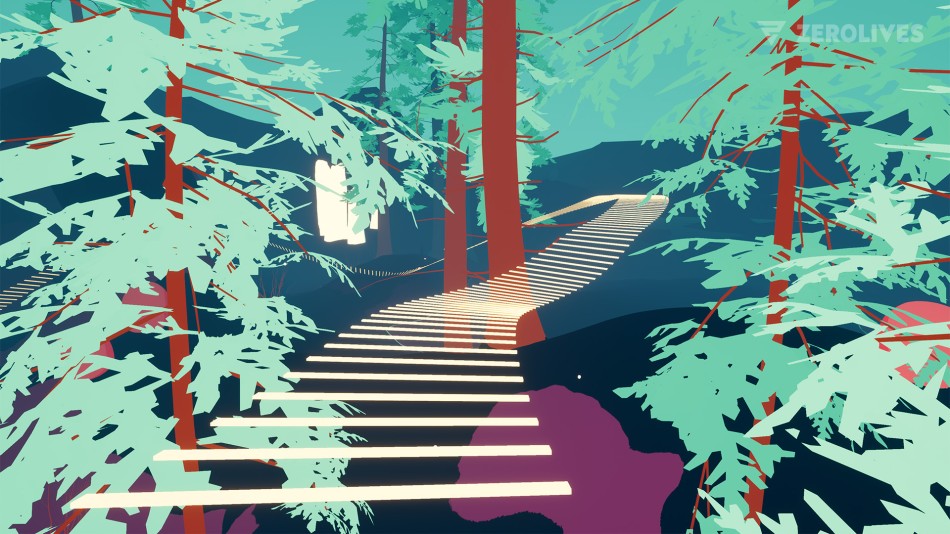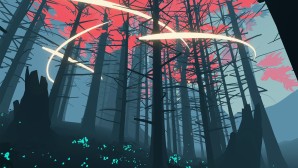Released earlier today, Shape of the World is best described as a visually stunning walking simulator. The game focuses solely on exploration, for better or for worse.
The game was made by Hollow Tree Games, which is a small team led by visual effects artist Stu Maxwell. He was involved with the development of several popular titles, including Gears of War 4 and Warhammer 40,000: Space Marine.
Shape of the World was a project launched back in June of 2015 when it collected CA$ 75,000 via a successful Kickstarter campaign.
In the game players journey through vibrant ecosystems that spring to life with psychedelic colors, splashing waterfalls, luminous monoliths and graceful creatures.
The game was developed around the idea that it is fun to get lost, so the game will do everything it can to make sure players get that experience. This concept was very well explained in the game's Kickstarter video, which is worth checking out to fully grasp the concept.
To summarize the experience, it is very similar to games like Proteus where the player can explore and get lost in the environment.
Graphics
Shape of the World's visuals are its bread and butter. The bright colors from the environments are simply awe-inspiring without overwhelming the player.
Walking through the world gives the feeling of fascination as animals pass by and trees form around you. Biomes and color palettes differ as you progress through the game, which also changes the way the player navigates through the levels. The creatures aren't completely interactive, but they are very cool to look at.
Sound Design
The sound design of the game was notable although it is not on par with its visuals. The music wasn't as dynamic as the environments. The music does change from level to level, but gameplay pacing doesn't reflect the score's tempo.
This problem may seem small but for a game that wants its players to get lost in, sound needs to be in-sync with the game's pacing.
Sound effects are minimal, but it does do a good job at incorporating itself with the environments. Personally, I enjoyed drumming on the intractable objects around me to sync with the music.
Gameplay
The underwhelming nature of the gameplay mechanics is a bit of a double-edged sword. The whole game revolves around exploring and getting towards the next biome by passing through a monument marker.
The player can also collect seeds that they can use to plant different types of trees and interact with the environment by pressing the right trigger button.
Trees can be used as a slight boost and rock arches can be used to fly towards its location. The great thing about a game like this is that it lets the player soak in the visuals and appreciate its artistic value. However, the main problem with the minimalistic gameplay is that it lacks variety.
There are plenty of seeds to collect, but all of them essentially do one thing: plant a tree. The only difference is what type of tree it plants. Interactivity with the creatures is almost non-existent except for a select few.
The game does ramp up towards the end, but the gameplay stays the same with slight variations of what you have been doing for the past five hours.
Conclusion
In the end, Shape of the World is a good visual game. However, the game could use better gameplay variation and a more dynamic sound design to really put it out there. If you appreciate a game that emphasizes on visual art and exploration, Shape of the World is not a bad choice, but it's not the best one either.














Comments